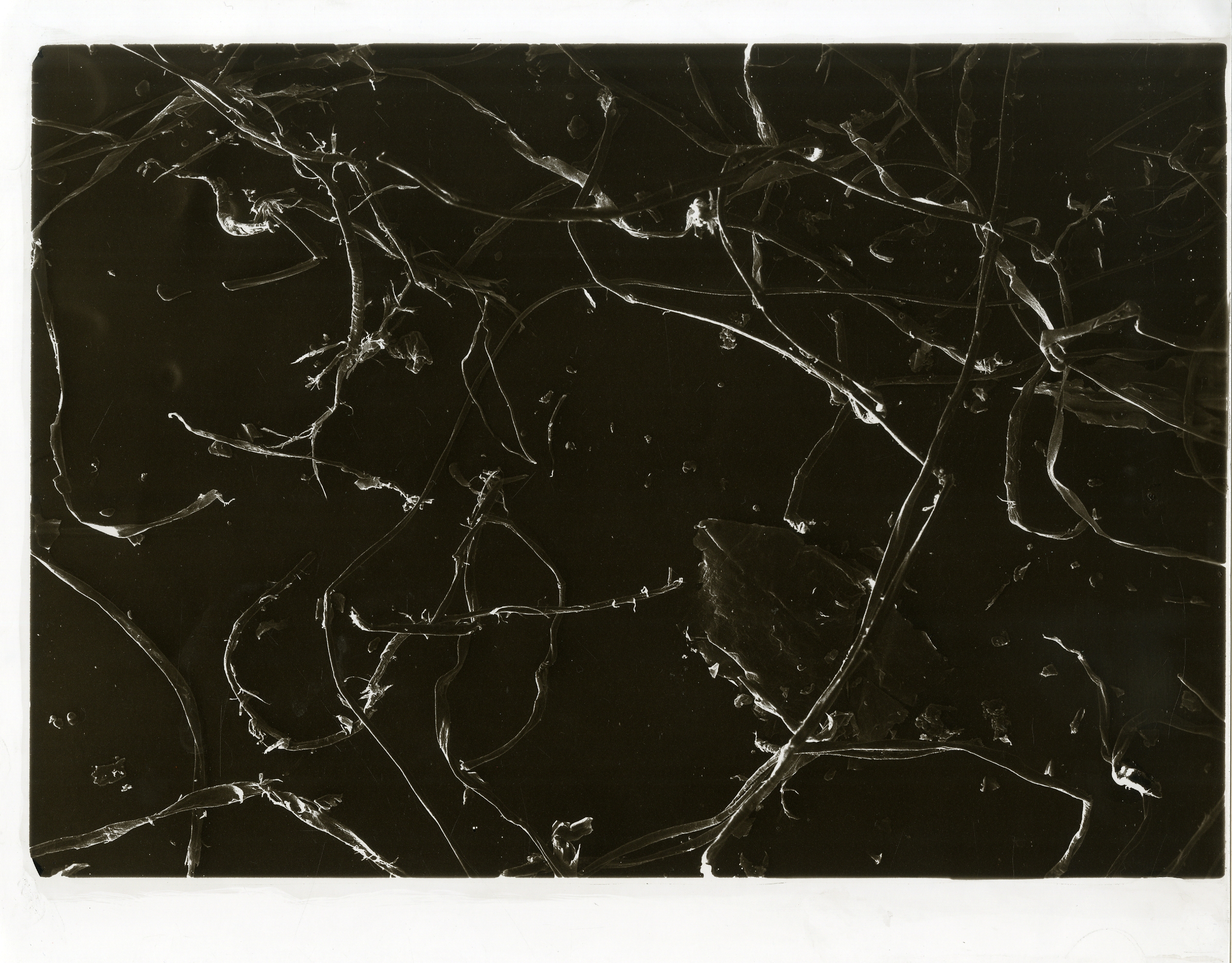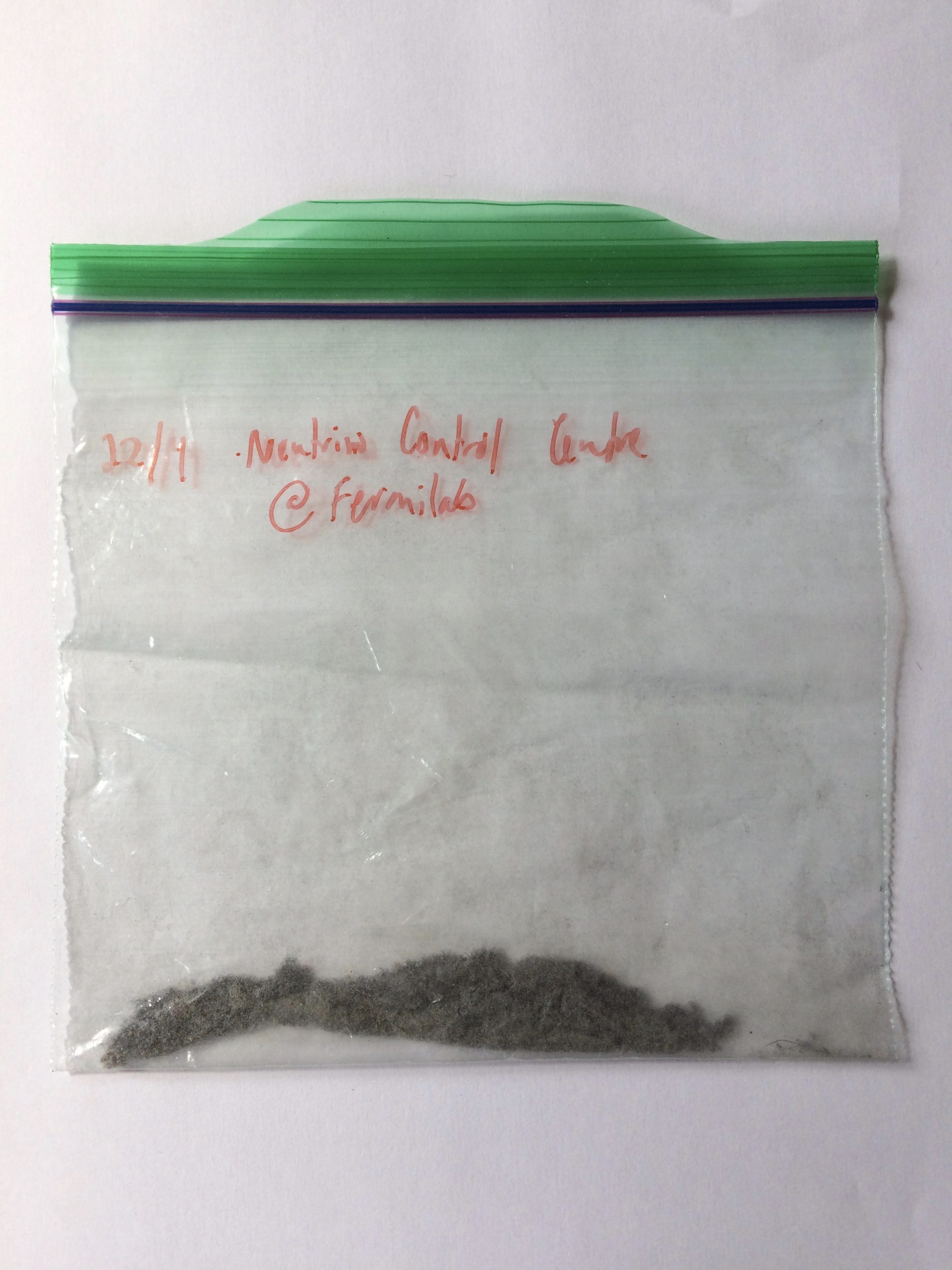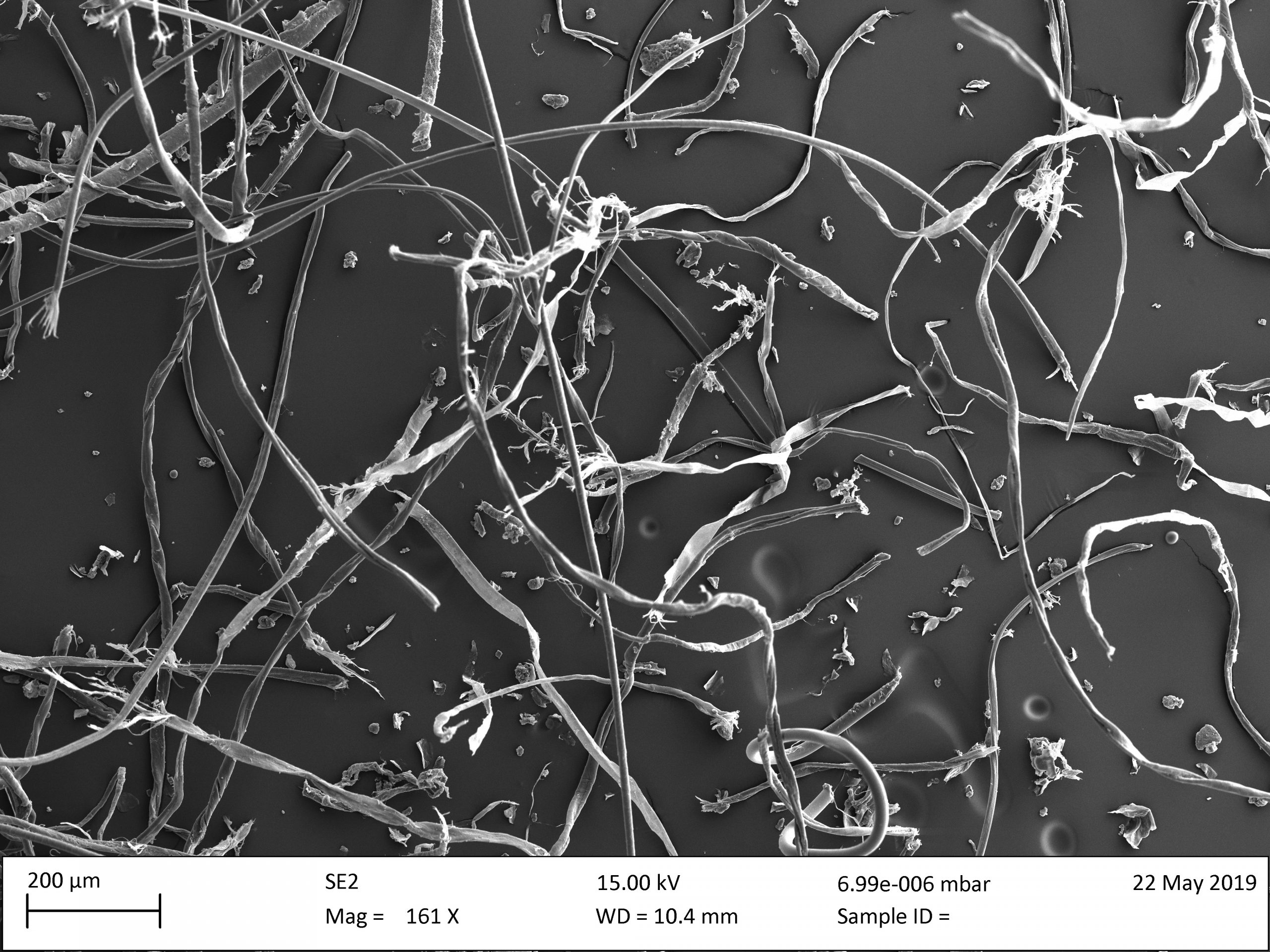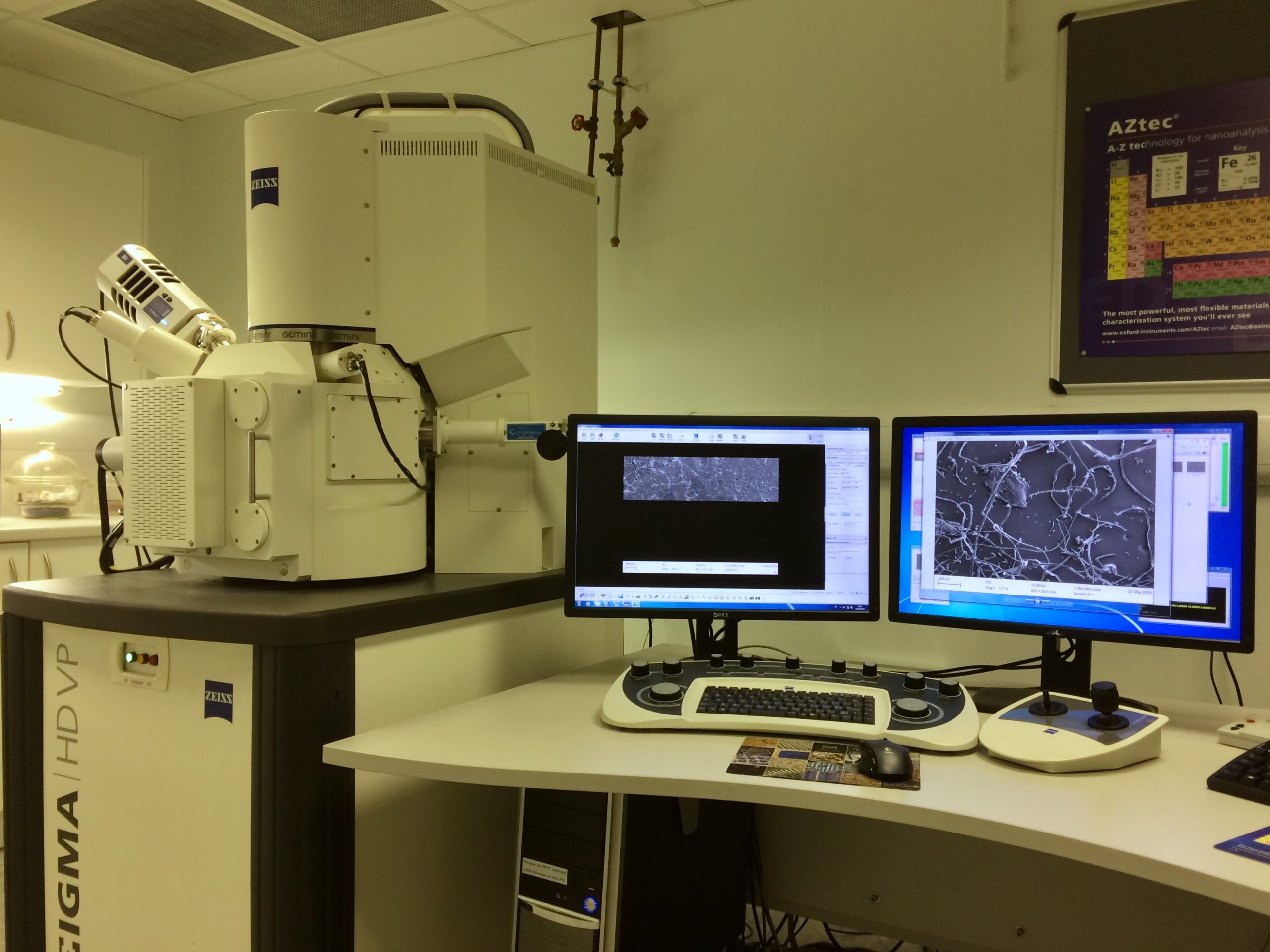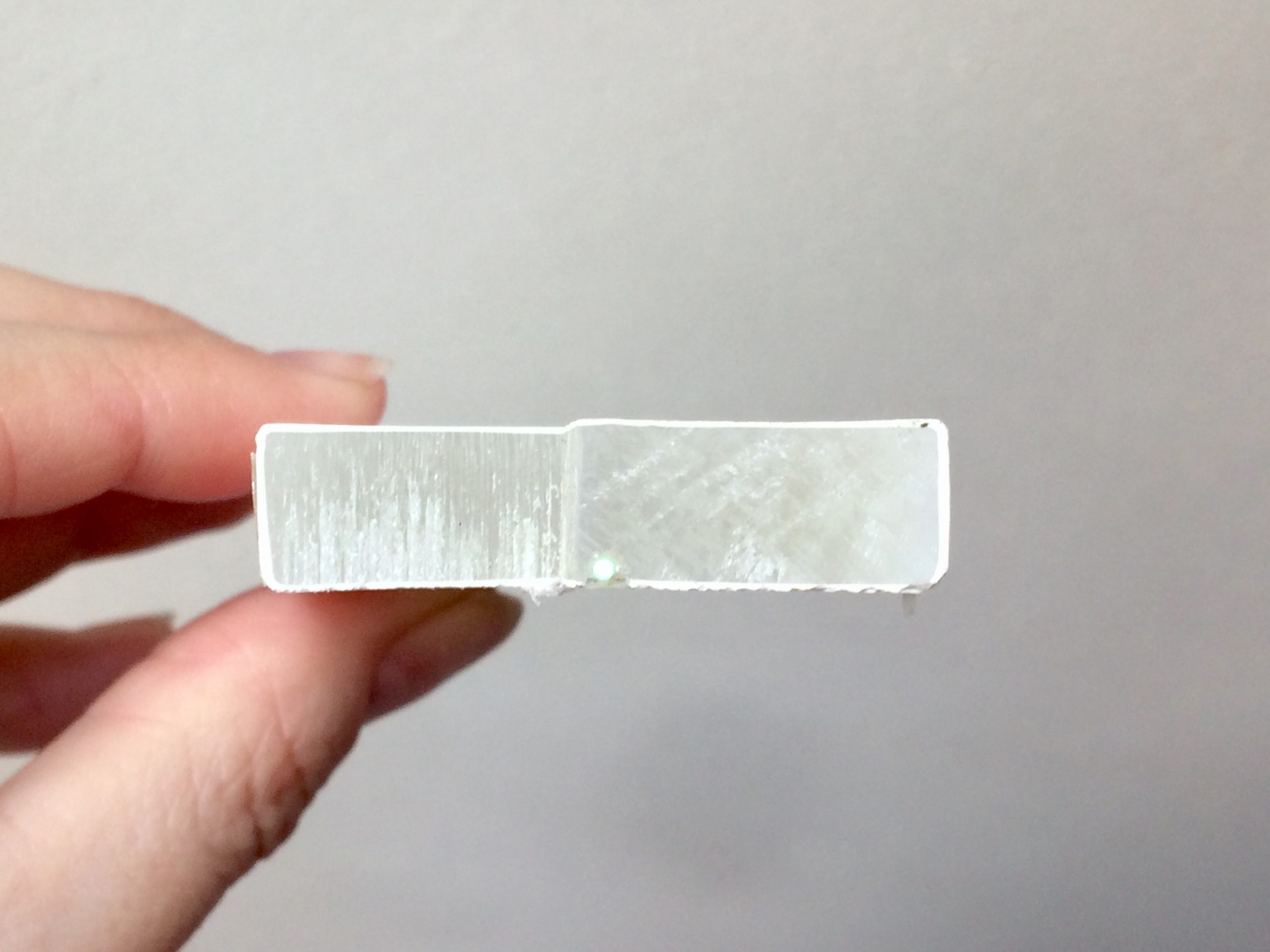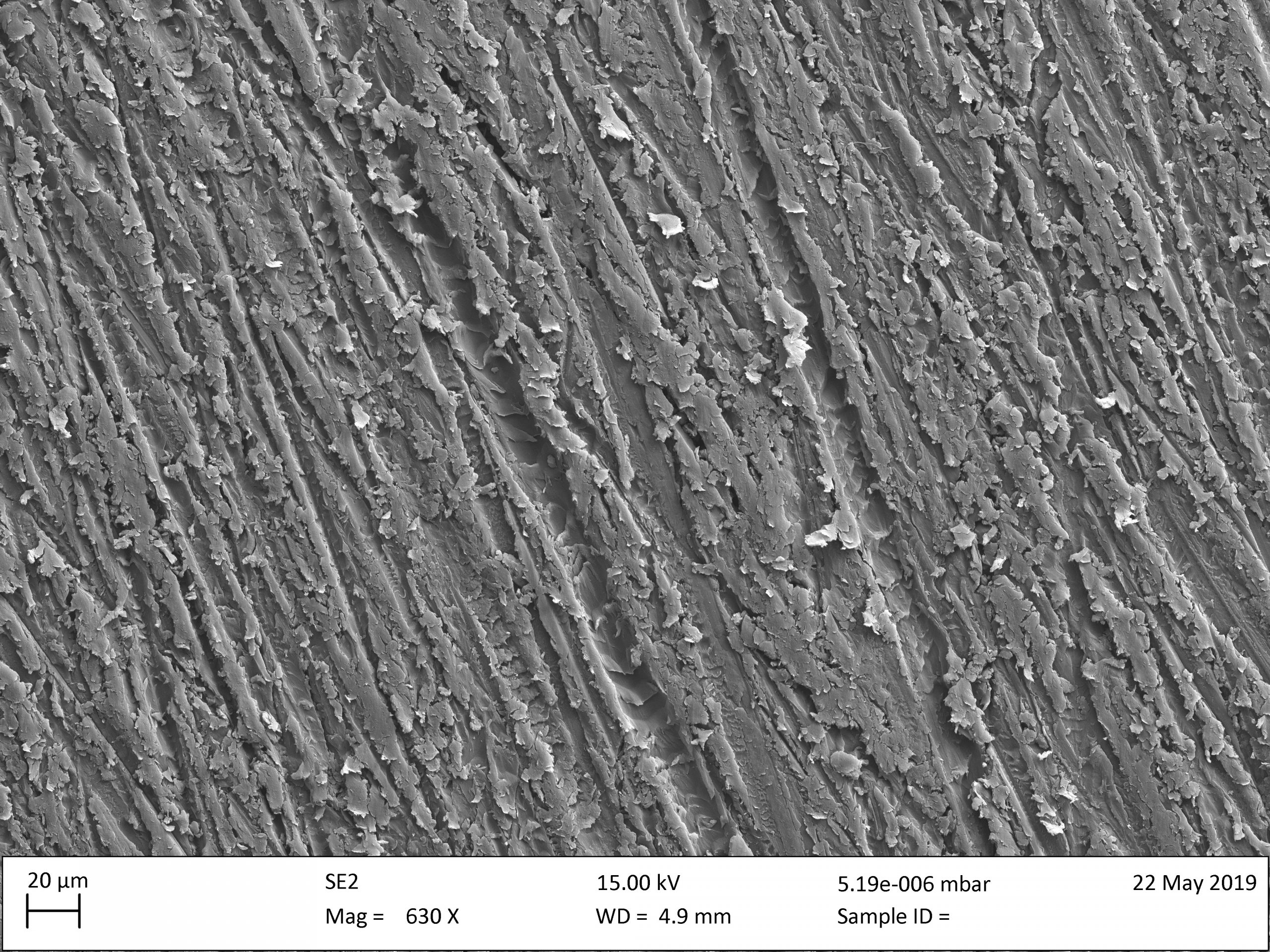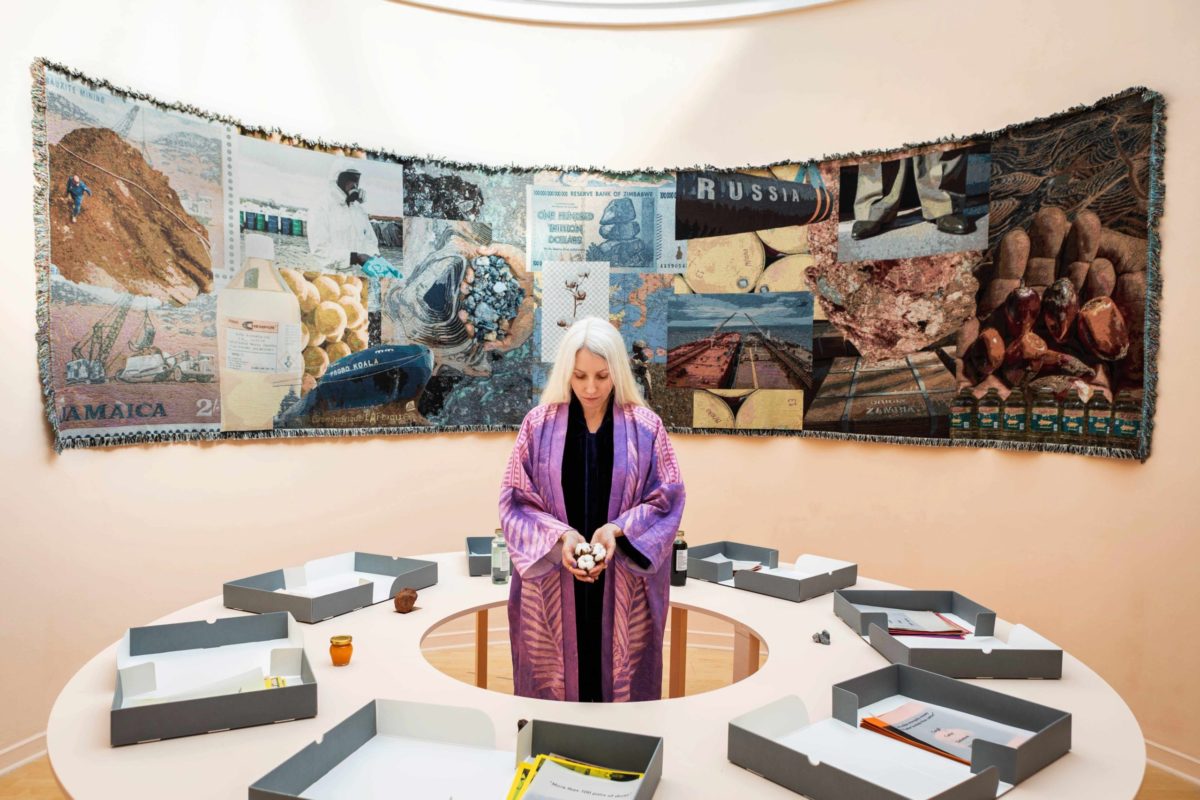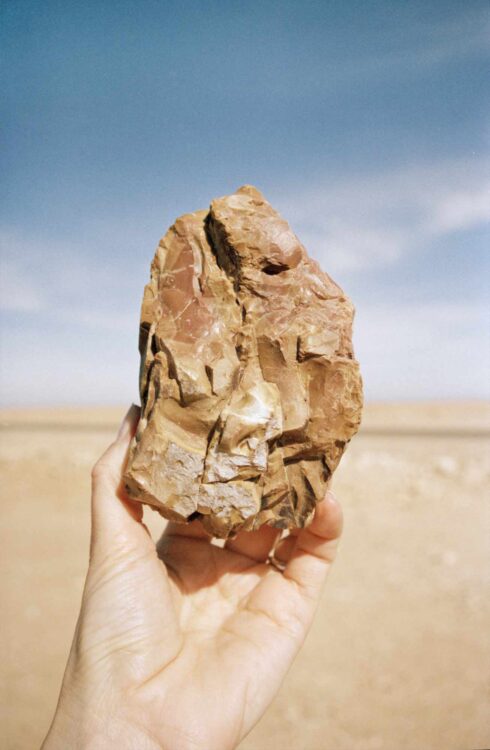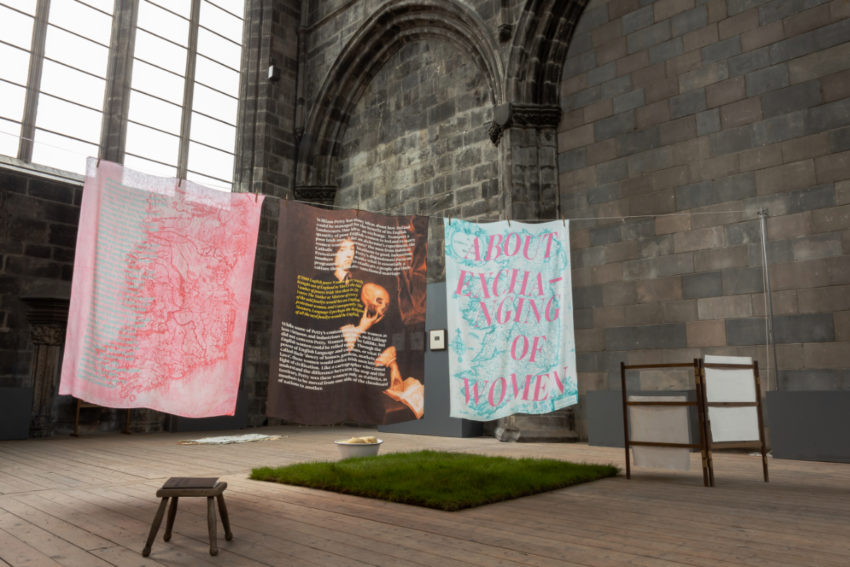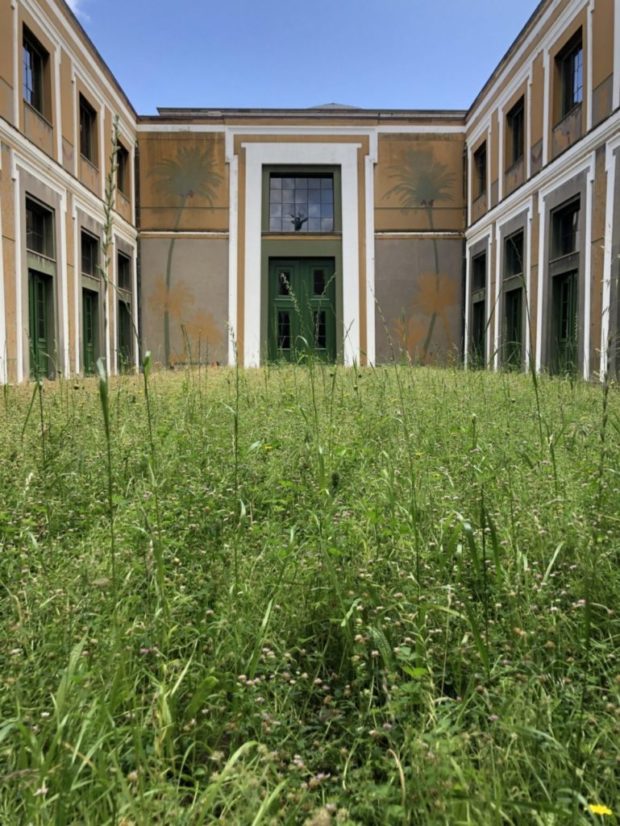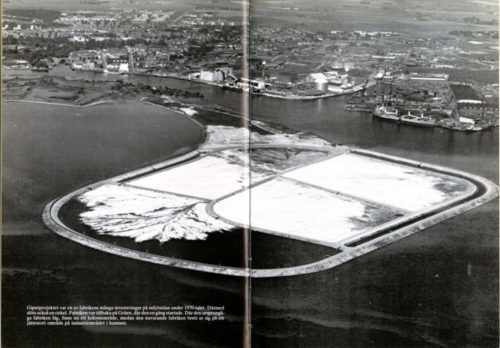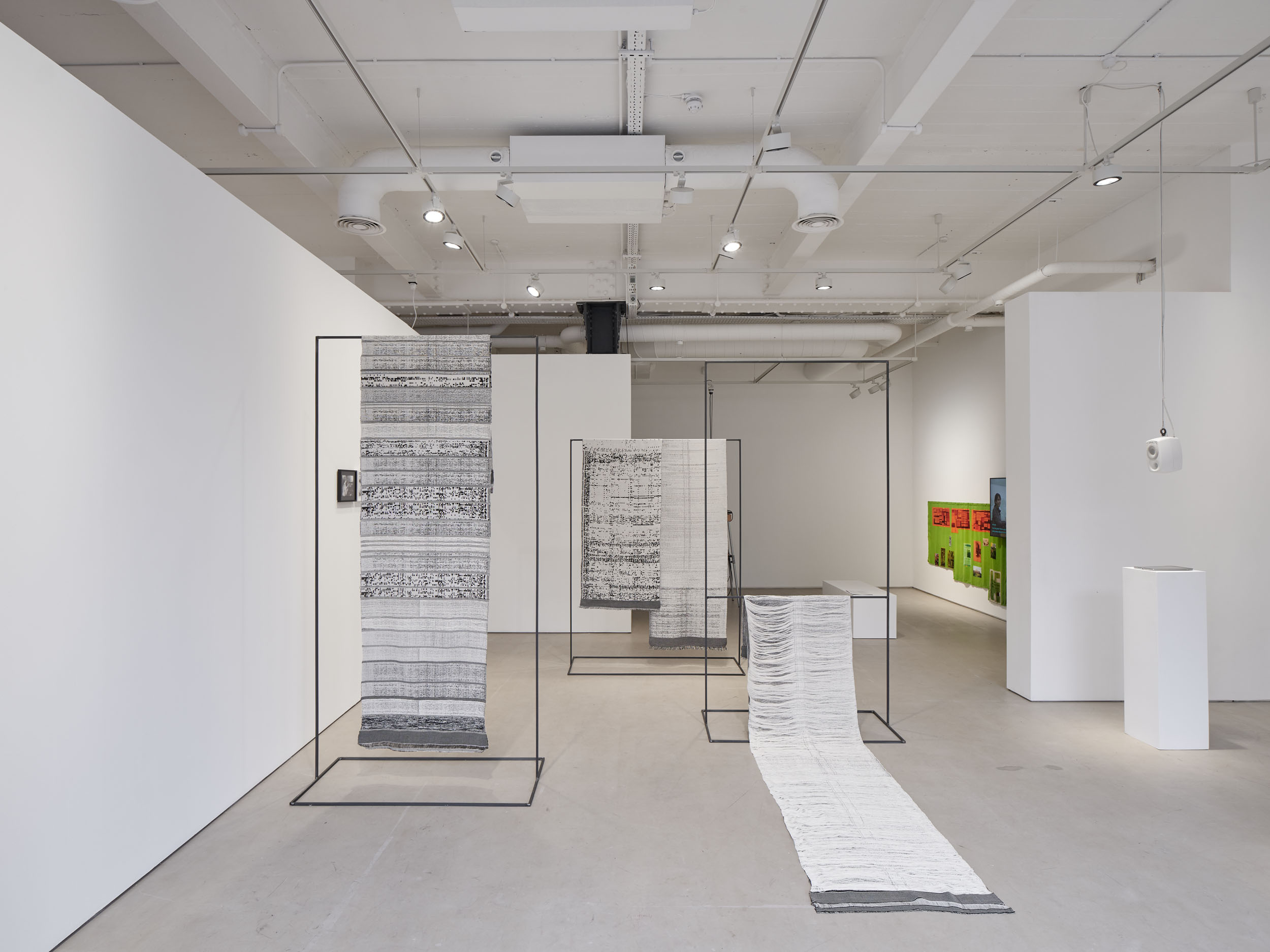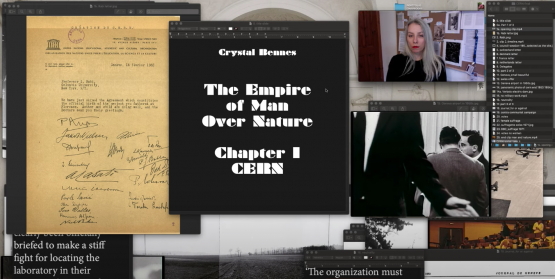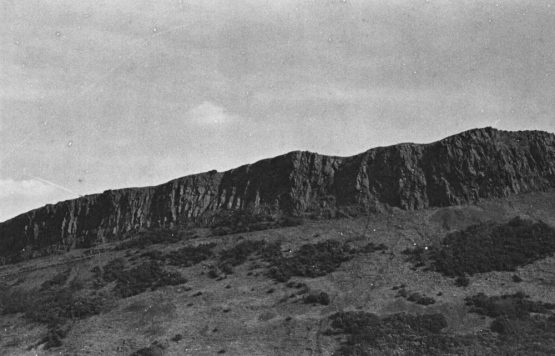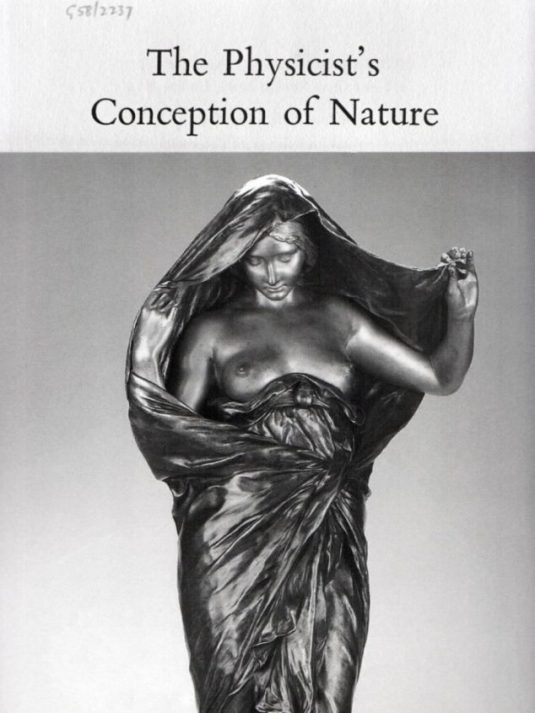An ongoing project to create indirectly-observed images of various component parts of particle physics detectors collected from fieldwork visits to Super-Kamiokande, CERN and Fermilab National Accelerator Laboratory.
Small pieces of materials recovered from particle physics detectors are first imaged using a scanning electronic microscope (SEM). The SEM images, which provide a very close view of the surface of the detector material, are then converted into digital negatives and printed on transparency paper. The final stage of the process sees the digital negatives used to create carbon transfer prints of the SEM images. Invented in the mid-nineteenth century, carbon transfer prints were developed by early proponents of photography in response to concerns about the fading of early types of silver-based black-and-white prints. Rather than silver, the photographic image of the carbon transfer print relies on a pigmented colloid process that makes use of a carbon-based pigment, gelatin and a chemical that makes the carbon mixture sensitive to UV rays of the sun or an artificial light source.
